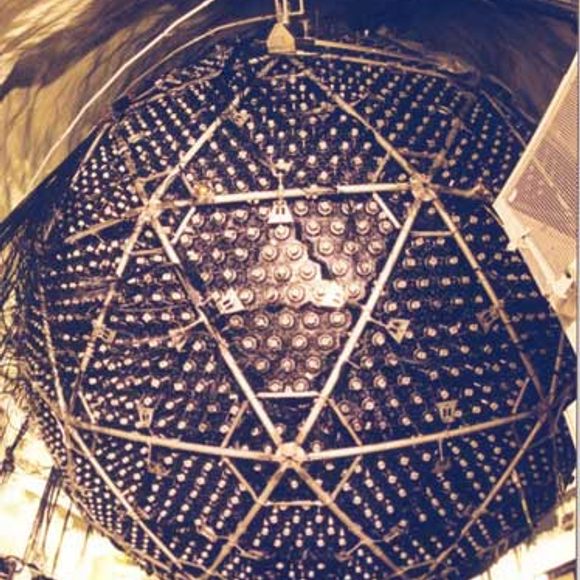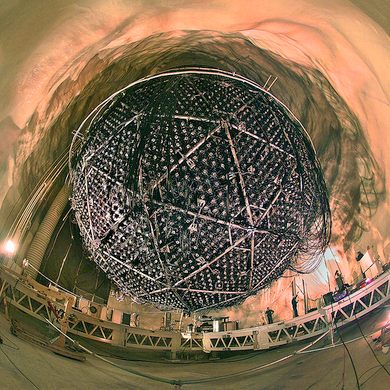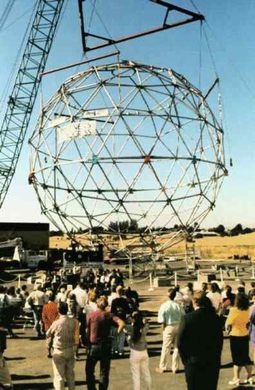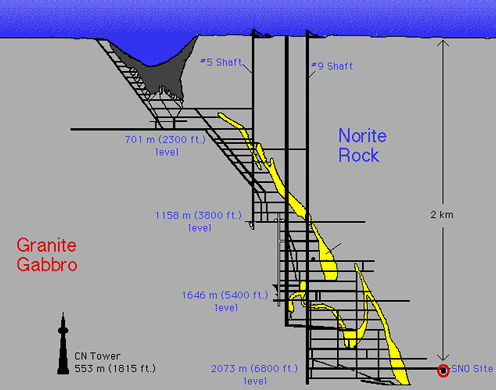Sudbury Neutrino Observatory
A neutrino detector built into the largest man-made underground cavity in the world.
More than a mile underground in an Ontario mine is the Sudbury Neutrino Observatory. The detector is located in the largest man made underground cavity in the world: a barrel 108 feet deep and 72 feet across forming a chamber roughly the size of a 10 story building. The entire chamber is filled with water, and its sole purpose is to detect solar neutrinos.
The walls of the chamber are lined with plastic to help to keep down the radiation levels from uranium and thorium in the surrounding rock. Inside the chamber is an enormous Buckminster Fuller sphere studded with 9600 photomultiplier tubes, which itself surrounds a forty-foot acrylic sphere filled with 1,000 tons of heavy water. (The $330 million dollars worth of heavy water is on loan from Atomic Energy of Canada Limited.) SNO, as it’s known, is situated in the deepest part of the nickel mine, helping to shield the detector from cosmic rays.
Despite the fact that billions of neutrinos stream through one’s body every second, they can only be detected when they strike an atom’s nucleus, giving off light. They are notoriously difficult to detect. Roughly 8 to 10 neutrino strikes are detected each day, and a single stray photon can cause a false event.
Having finished the recording element of the experiment, the heavy water has been drained out as the detector is being upgraded for the SNO+ experiment. The acrylic sphere will be filled with an organic liquid much like mineral oil, which can detect neutrinos of a much lower energy than the SNO could.
While the observatory itself is not currently open to the public for tours, in nearby Greater Sudbury the museum Science North shows “Secrets from the Sun,” a video tour of the Sudbury Neutrino Observatory.

























Follow us on Twitter to get the latest on the world's hidden wonders.
Like us on Facebook to get the latest on the world's hidden wonders.
Follow us on Twitter Like us on Facebook